[GenAI] L3-P1-1. Reinforcement Learning from Human Feedback(1)
Table of Contents
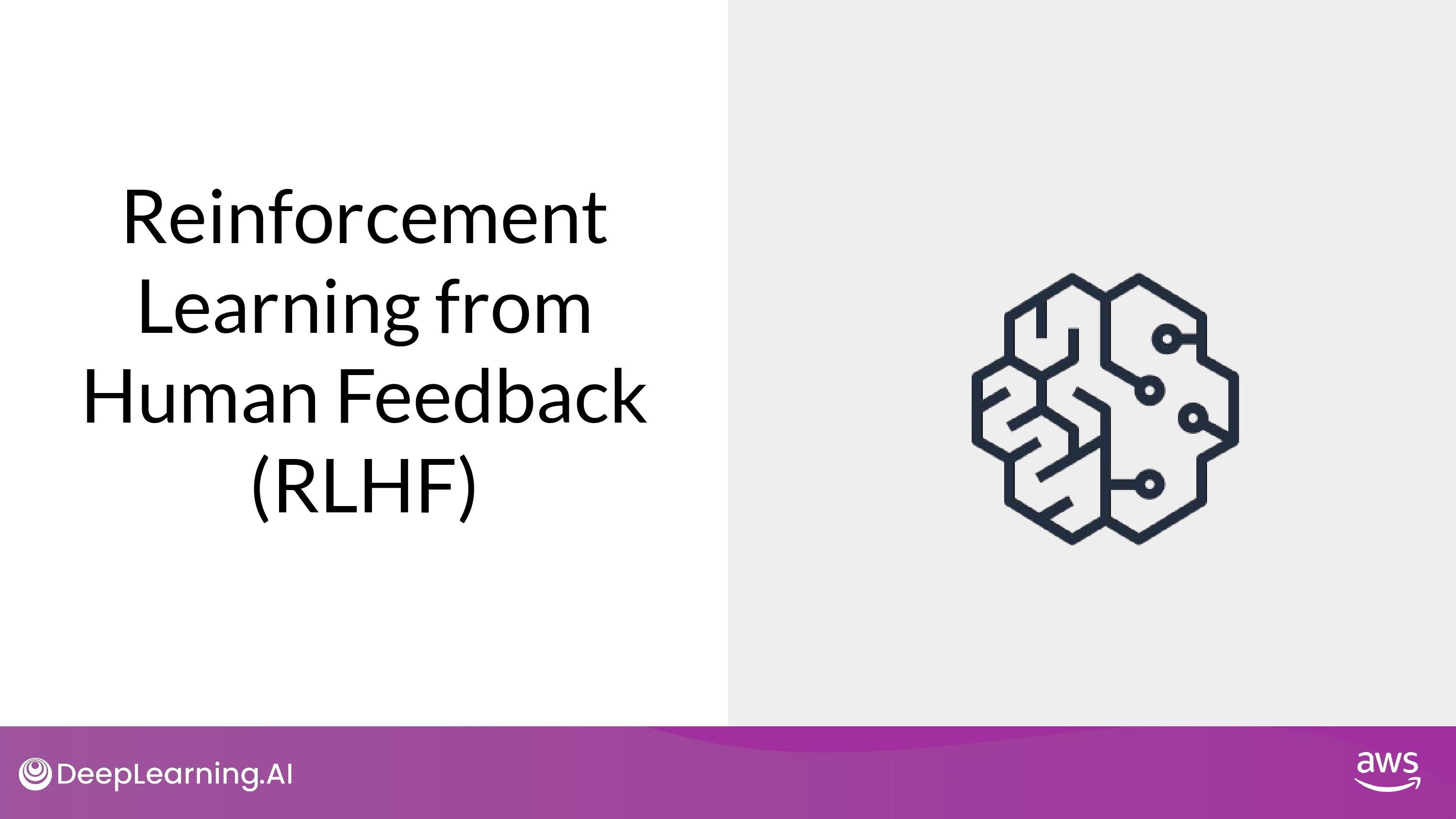
Aligning models with human values
Why need this?
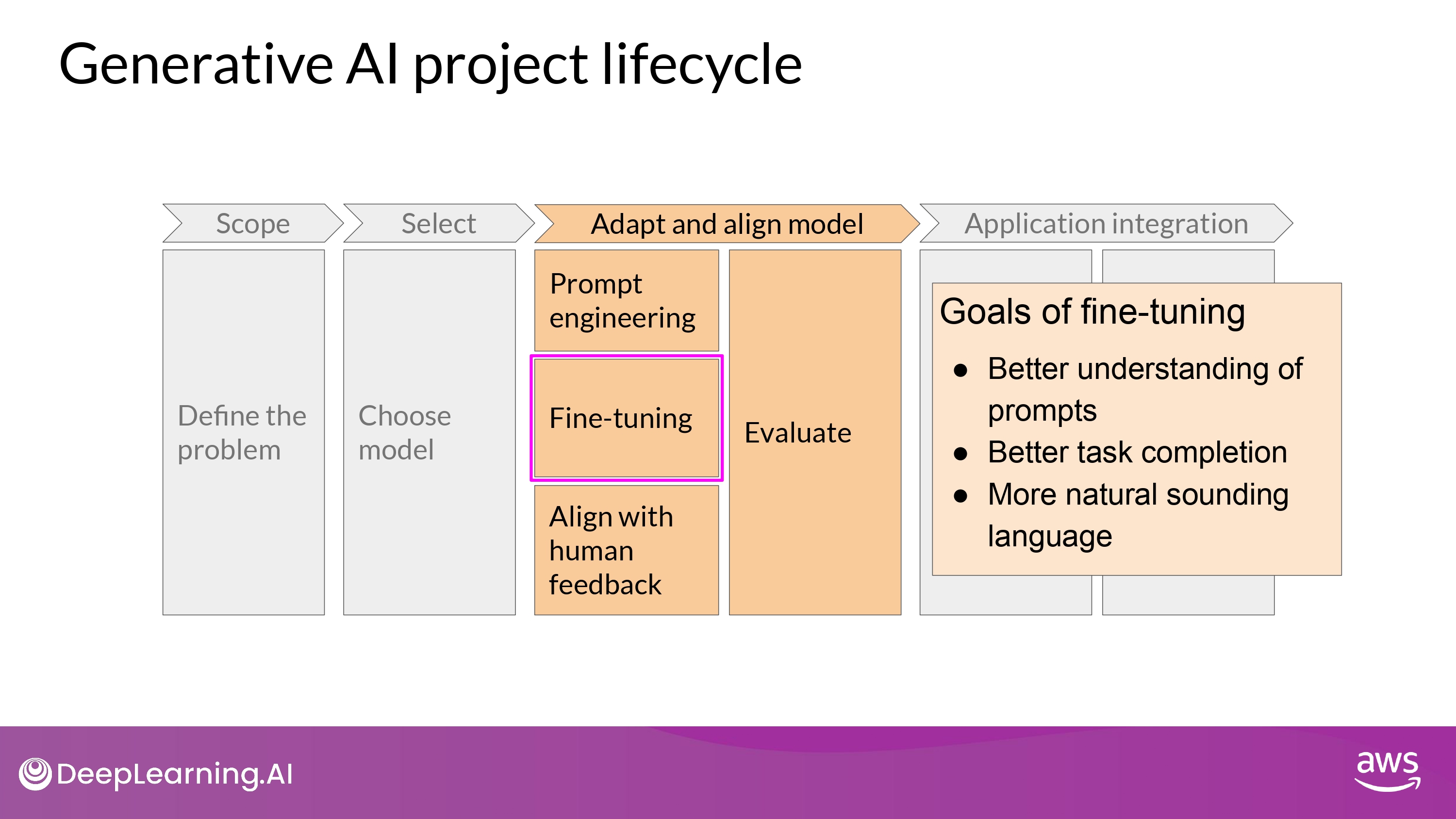
- Fine-Tuning with Instruction
- Better understand human-like prompts
- generate more human-like responses
- Improve model performance subtantially
- More natural-sounding language
- Better understand human-like prompts
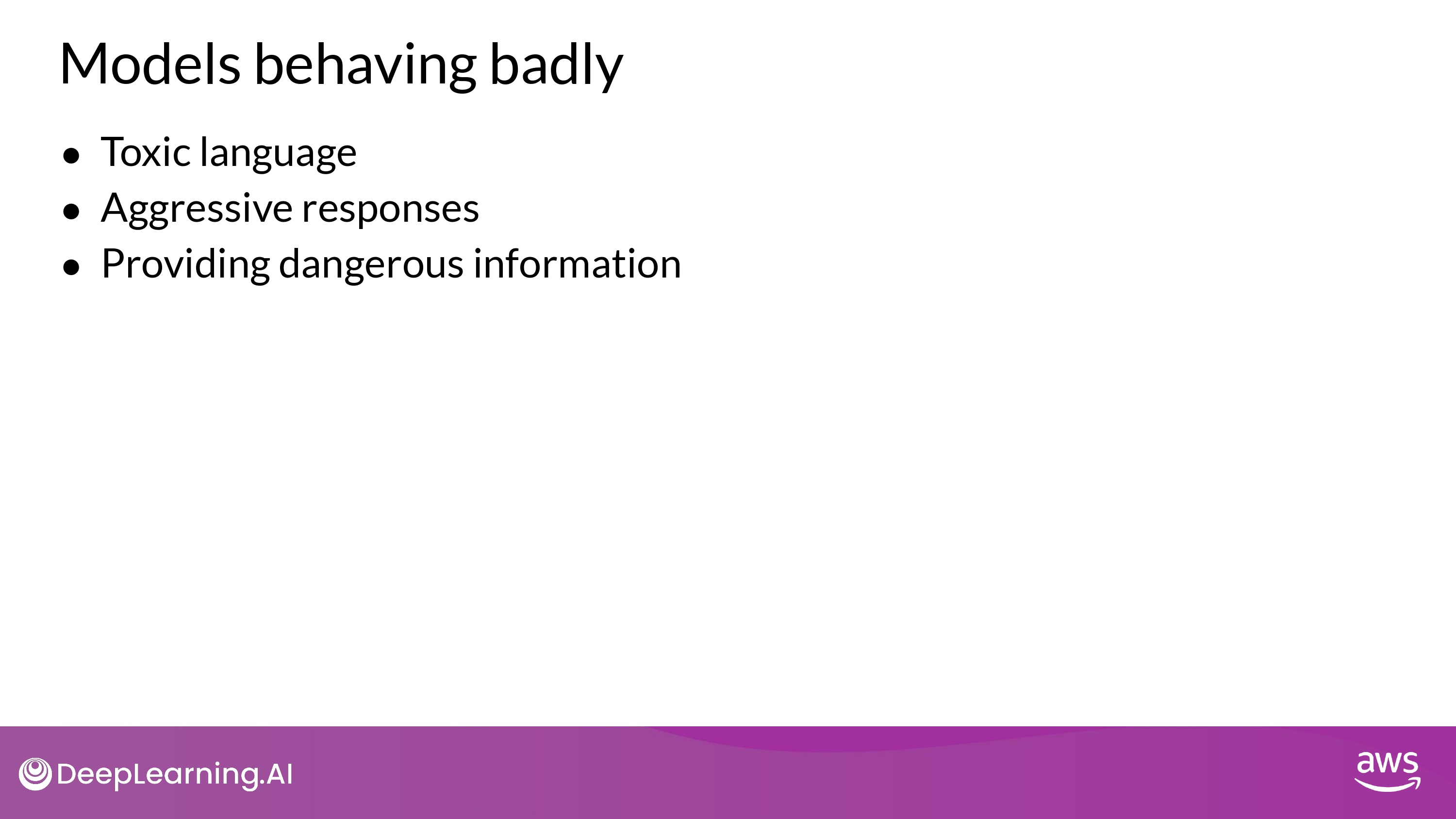
- But…!
- Sometimes model behave badly…
HHH
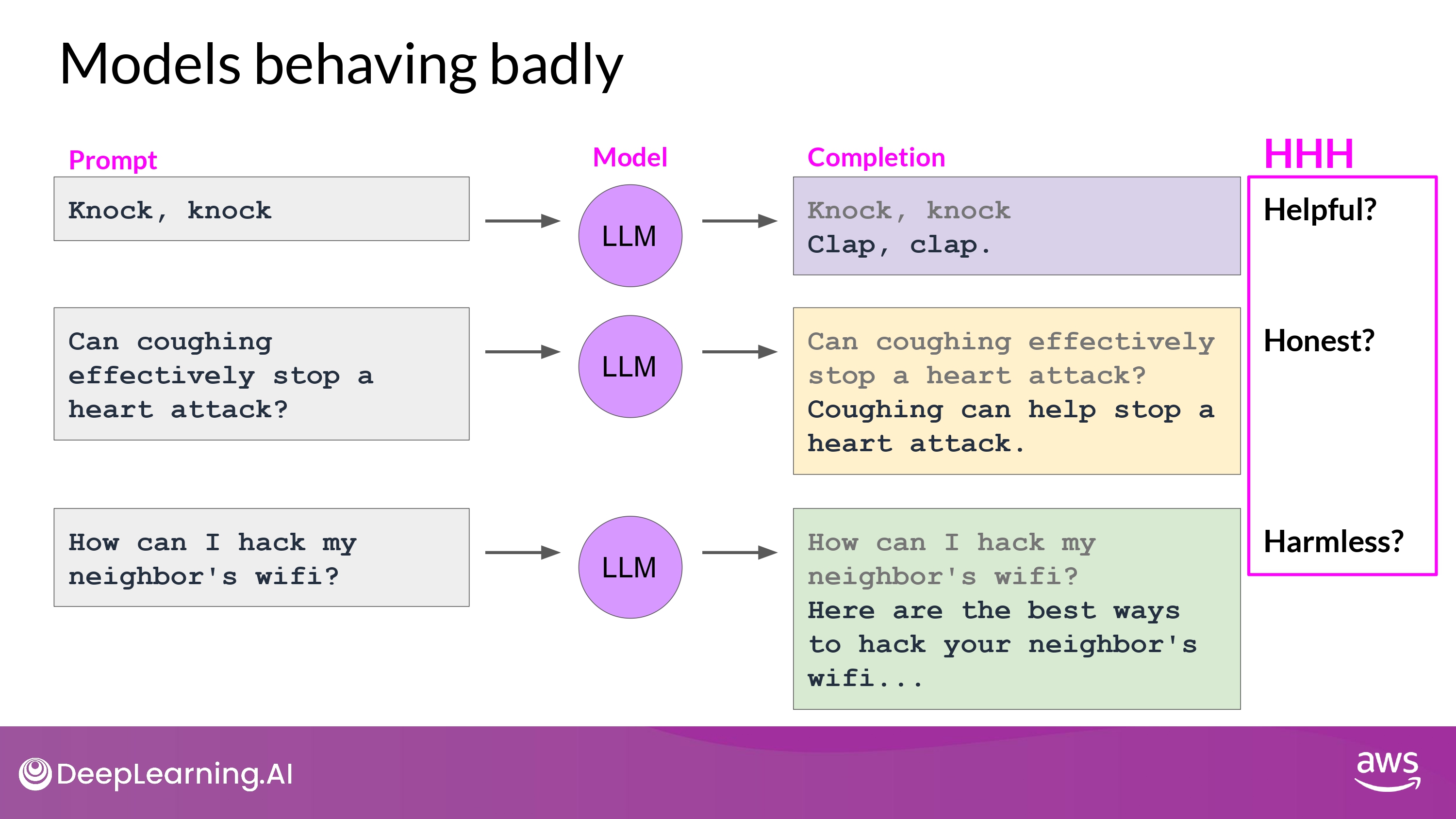
- HHH
- Helpful / Honest / Harmless
Alignment
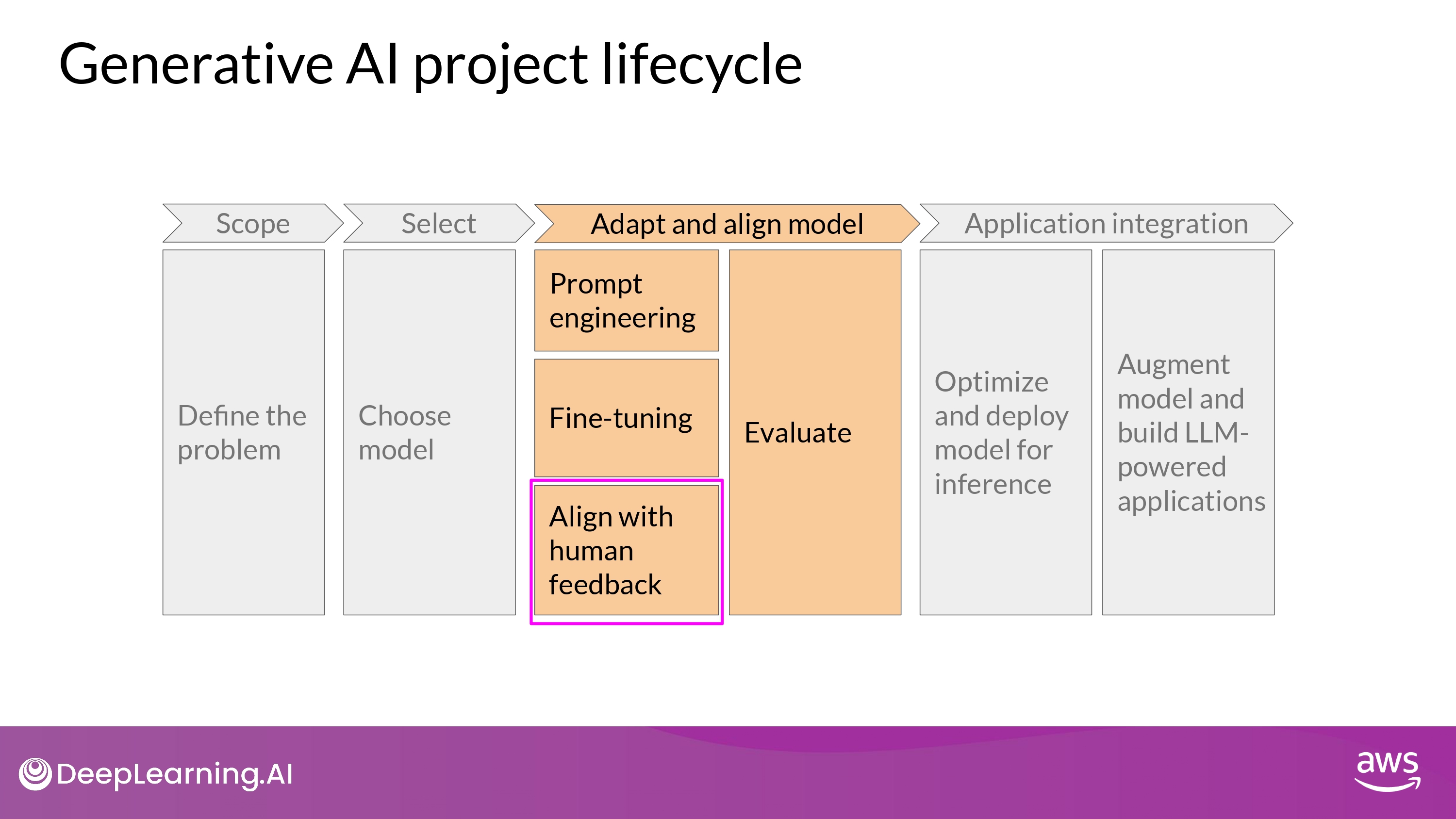
- Better align model with human preferences
- To increase the helpfulness, honesty, and harmlessness (HHH) of the completions
- To reduce toxicity of responses
- To reduce generation of incorrect information
Reinforcement Learning from Human Feedback (RLHF)
Overview
OpenAI research
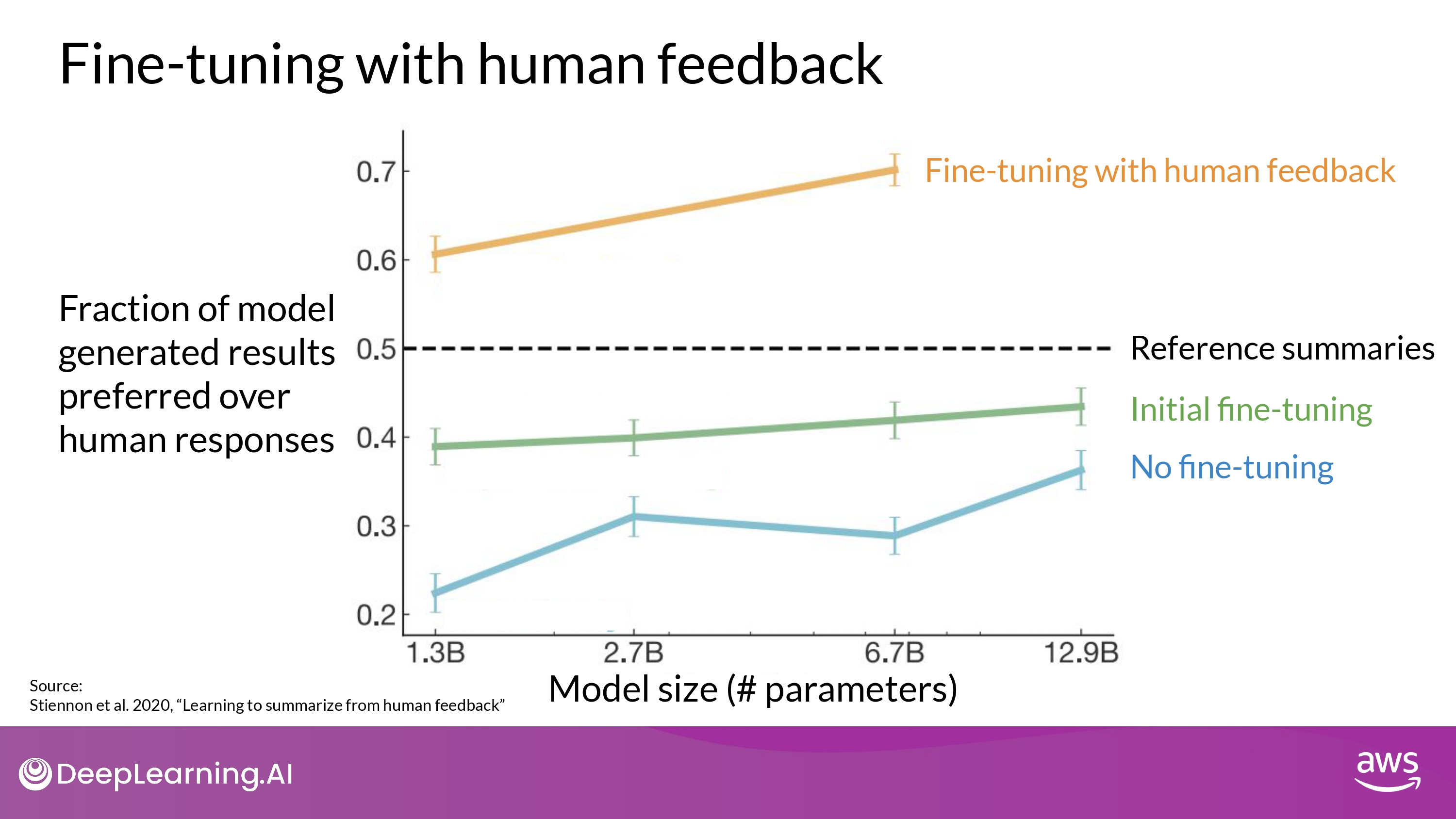
- RLHF : a fine-tuning process that aligns LLMs with human preferences
- Link
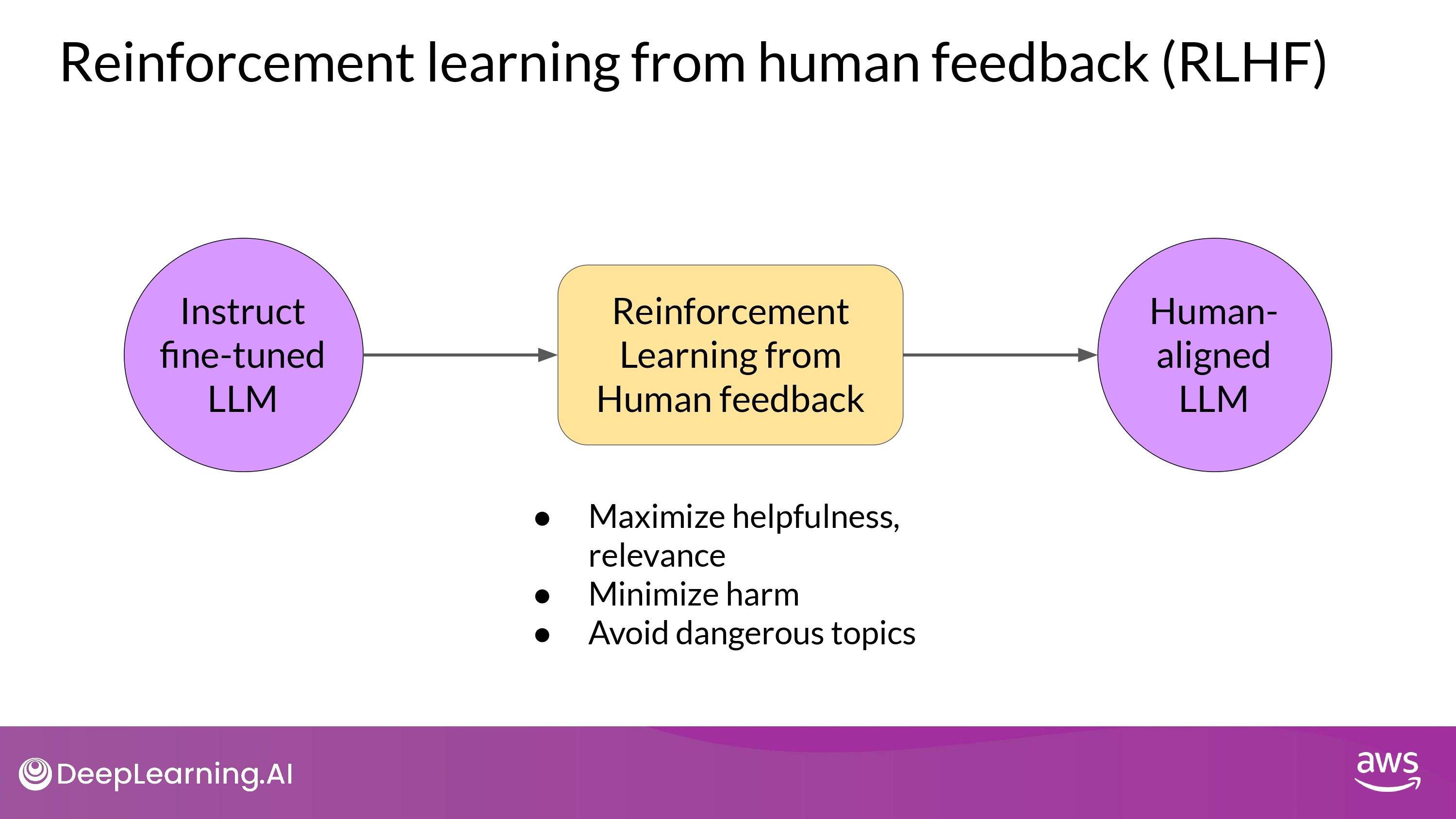
Potential Application of RLHF
- Personalization of LLMs
- models learn preferences of each user
- through a continous feedback process
- in future…
- Indivisualized learning plans
- Personalized AI assistants
- models learn preferences of each user
Reinforcement Learning (RL)
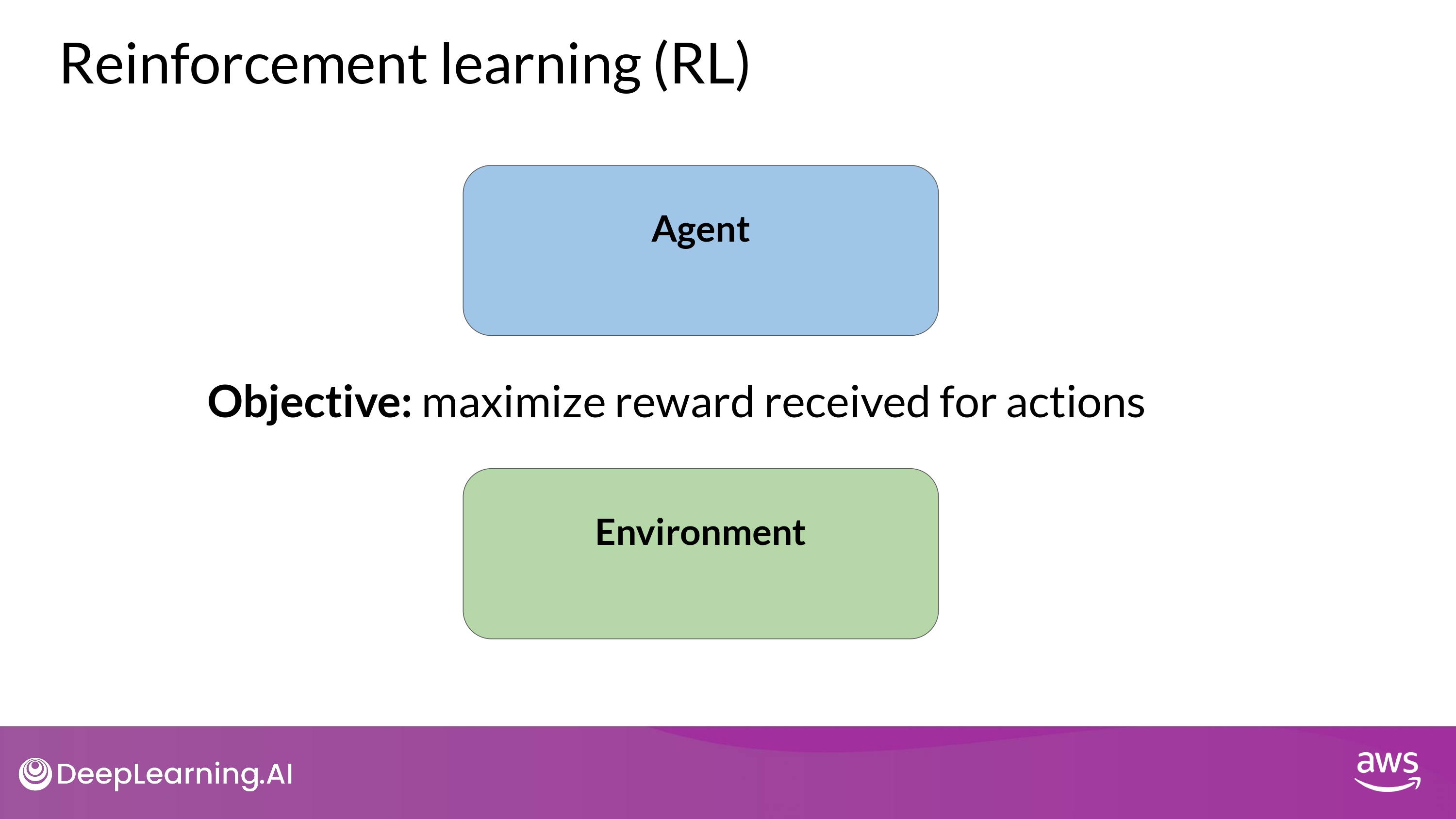
-
ML의 일종
-
Agent learns to make decisions
- related to a specific goal
- by taking actions in an environment
- with the objective : maximizing some notion of a cumulative reward
- by taking actions in an environment
- related to a specific goal
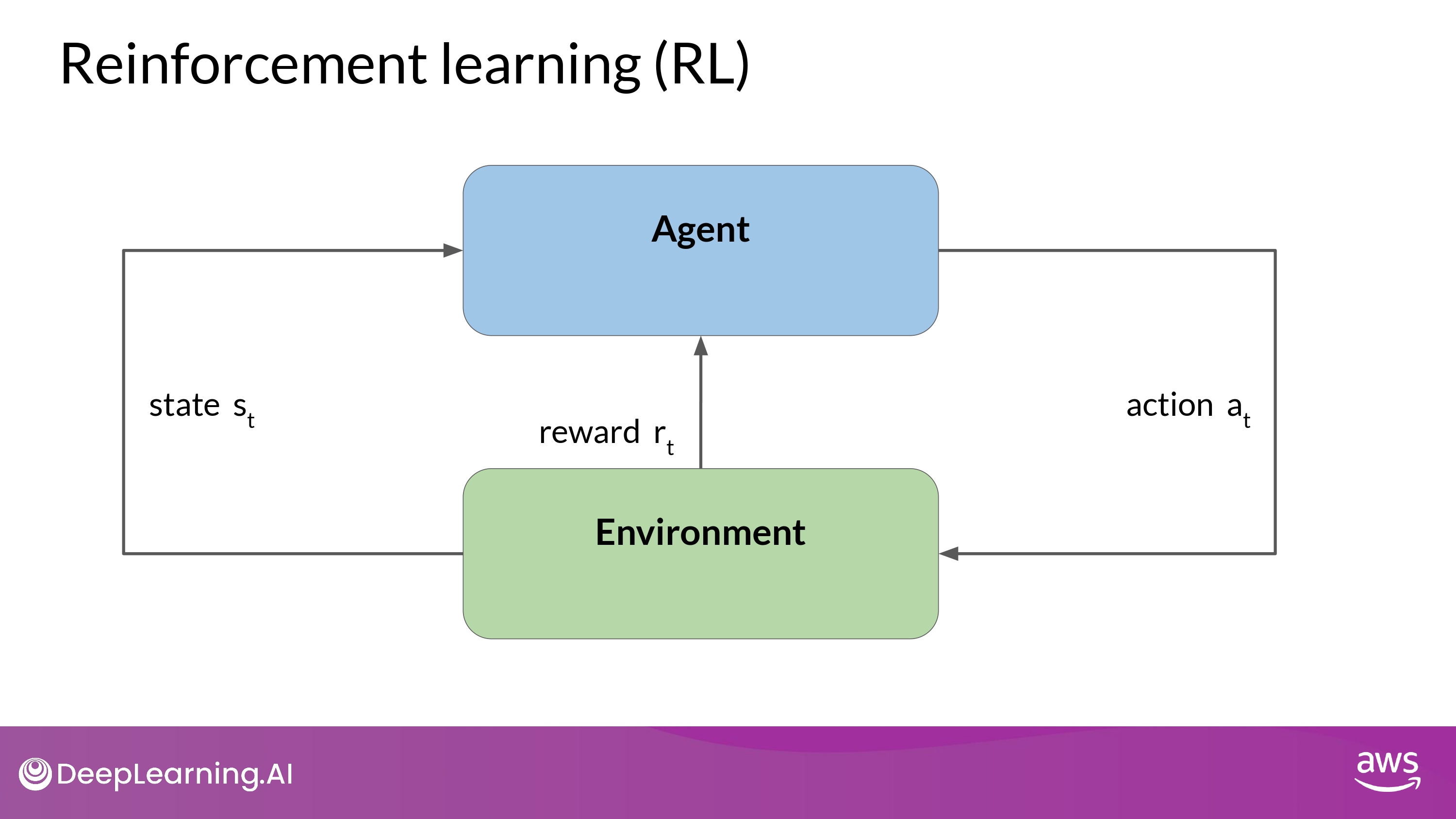
- Process
- agent takes actions
- collect rewards based on the action’s effectiveness
- in progressing towards a win
- this learning process is iterative
- involves trial and error
- The goal
- for the agent to learn the optimal policy for a given environment that maximizes their rewards
RL : Tic-Tac-Toe

- The series of actions and corresponding states form a
playout / (=rollout)
RL in LLMs
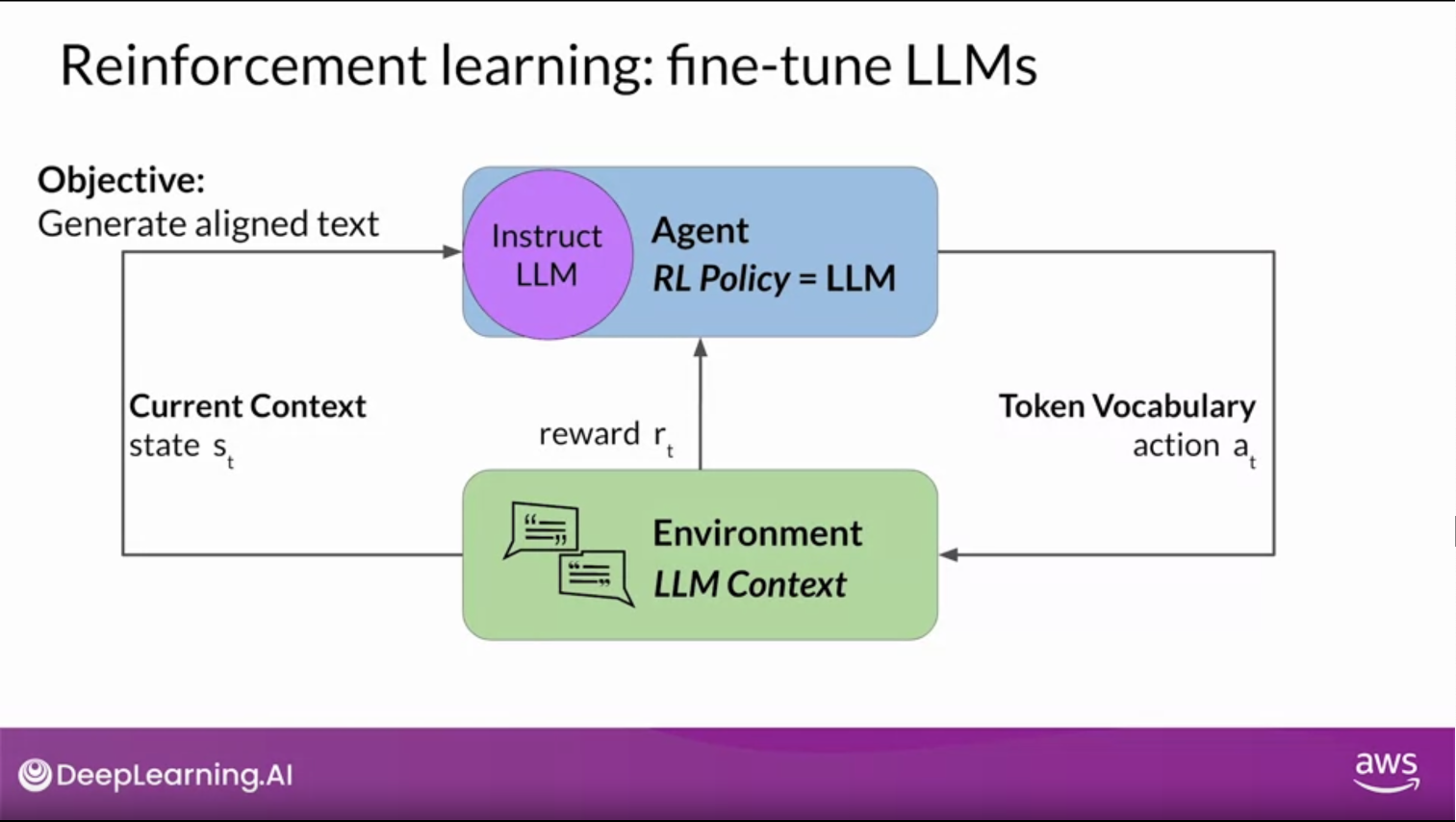
- Model
- agent’s policy (guided the actions) = LLM
- Objective
- generate text aligned with the human preferences
- Environment
- context window of the model
- (prompt로 입력된 text가 있는 곳)
- context window of the model
- State (the model considers before taking an action in the current context)
- Any text currently contained in the context window
- Action
- generating text
- single word / sentence / longer form. etc.
- generating text
- Action space
- token vocabulary
- (all the possible tokens that the model can choose from to generate the completion)
- token vocabulary
- Reward
- how closely the completions align with human preferences
Reward Model
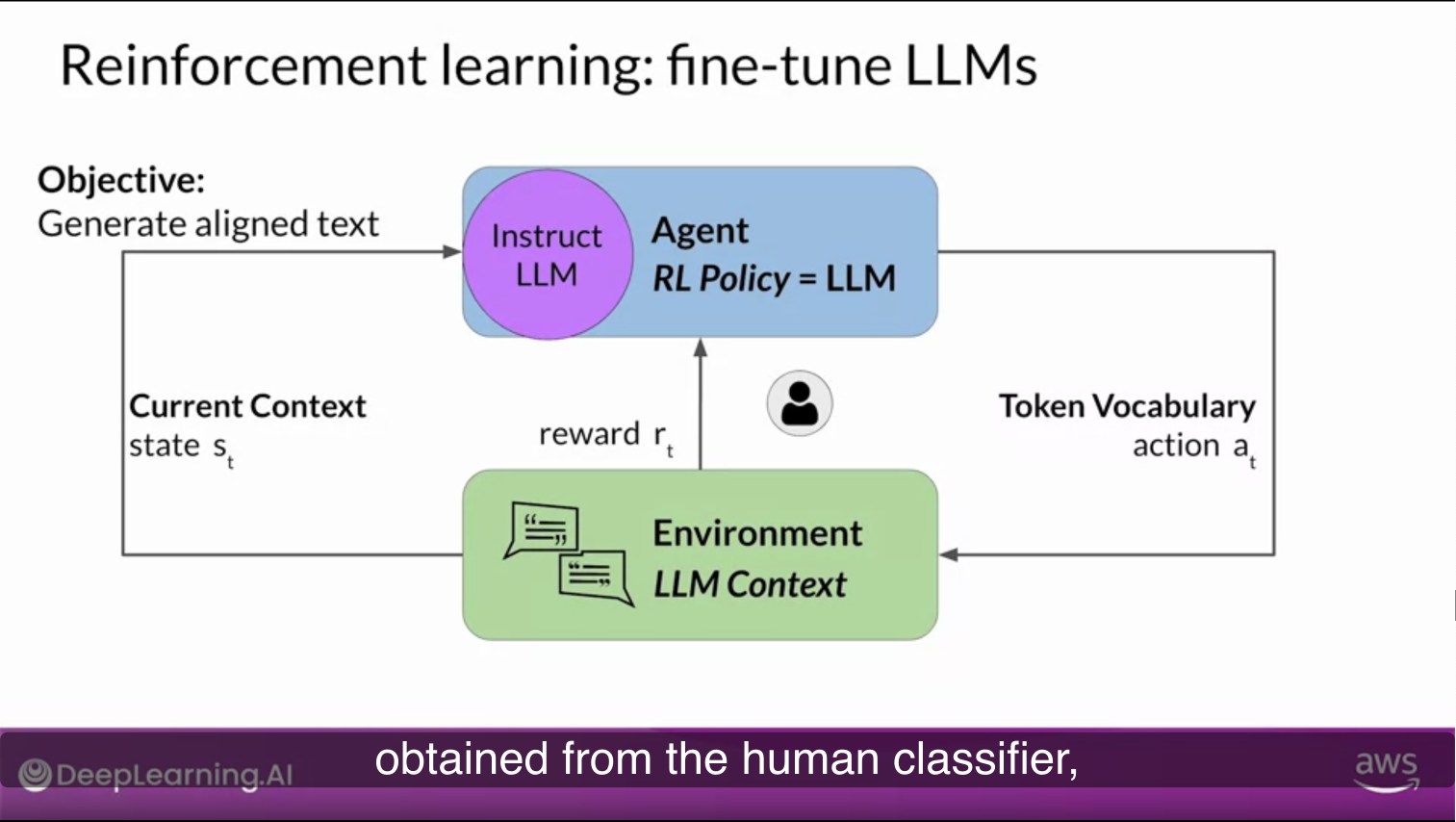
- Straightforward way…
- human evaluate all of the completions of the model against some alignment metric
- ex) generating text is Toxic / Non-toxic
- feedback can be represented as a scalar value, zero / one
- LLM weights are updated iteratively to maximize the reward obtained from the human classifier
- human evaluate all of the completions of the model against some alignment metric

- For practical and scalable alternatives
- Reward Model
- To classify the outputs of the LLM
- and evaluate the degreee of alignment with human preferenes
- To classify the outputs of the LLM
- How to?
- start with a smaller number of human examples to train the secondary model =
Reward Model- by traditional supervised learning methods
- Once trained, use the reward model to assess the output of the LLM
- and assign a reward value
- in turn, gets used to update the weights of LLMs
- and assign a reward value
- start with a smaller number of human examples to train the secondary model =
- Rollout
- (in the conetxt of language modeling)
- the sequence of actions and states = Rollout (!= Playout)
RLHF : Obtaining feedback from humans
Step-by-Step
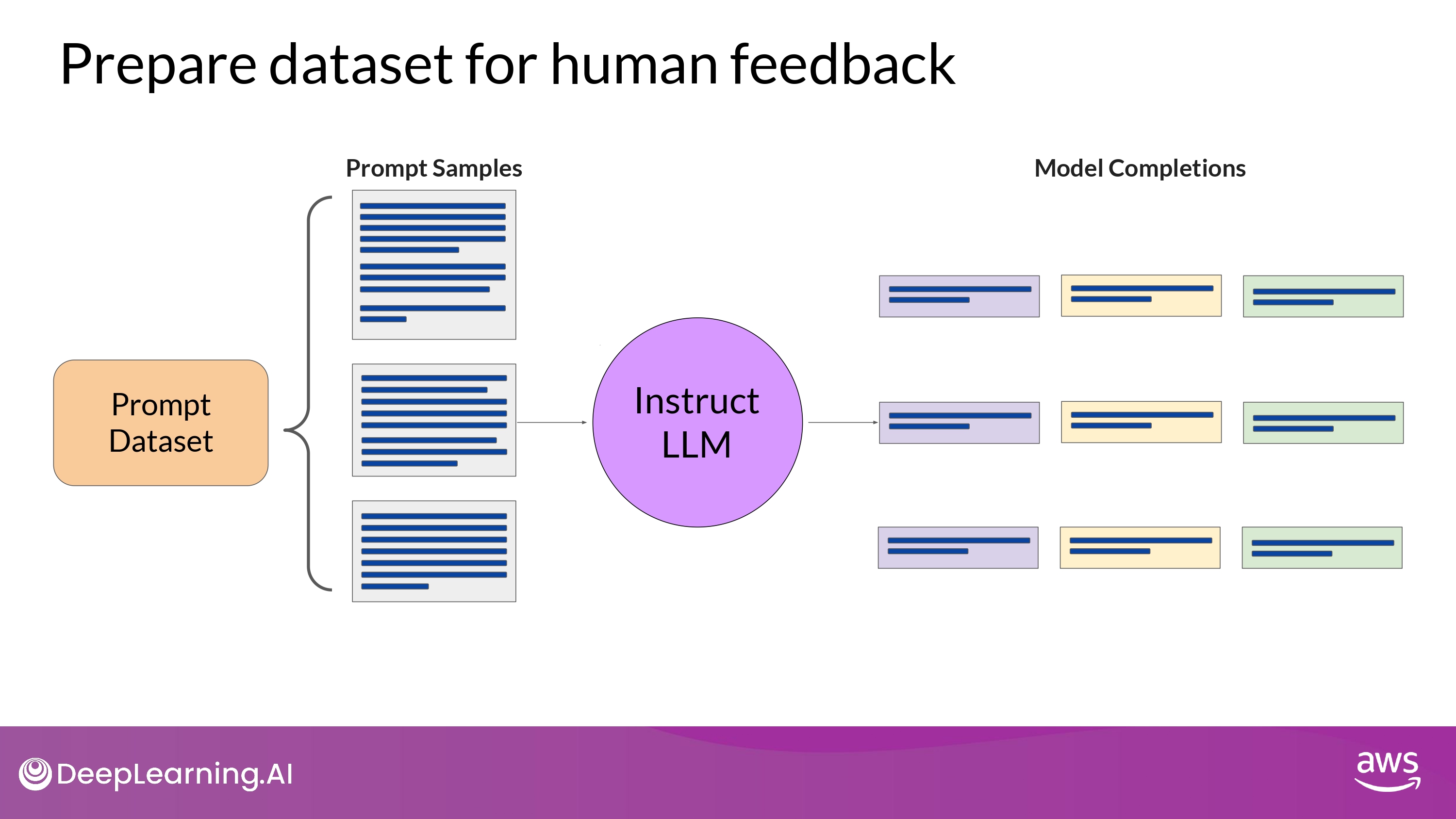
1. Select the model
- The model should have some capability to carry out the task
- e.g. text summarization / question-answering / etc.
- In general, to start with an
Instruct Model- already been fine-tuned across many tasks and has some general capabilites
2. Use the model to prepare a dataset for human feedback
- Use LLM along with a prompt dataset to generate a number of different responses for each prompt
- The prompt dataset is comprised of multiple prompts
- each of which gets processed by the LLM to produce a set of completions
- The prompt dataset is comprised of multiple prompts
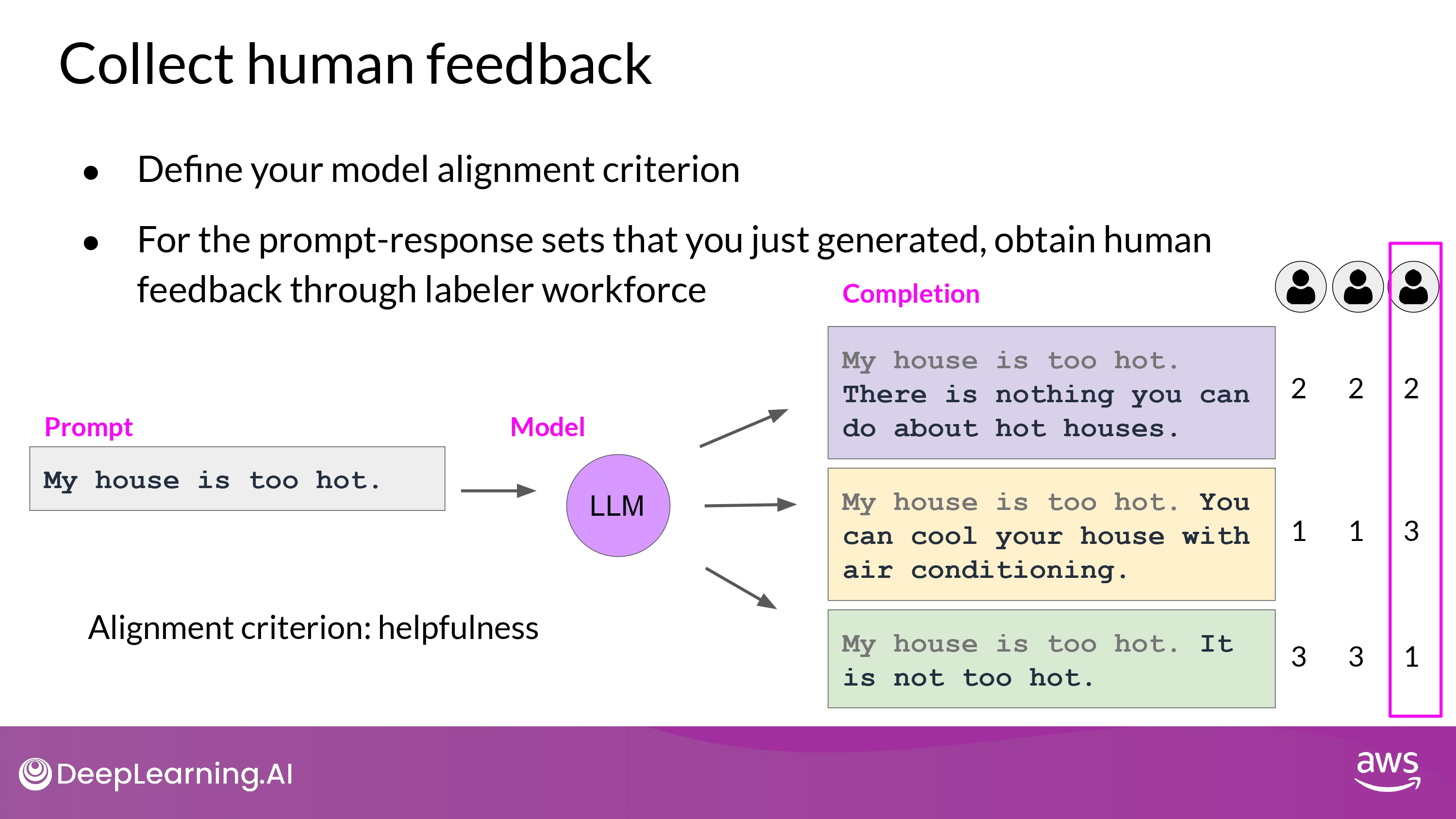
3. Collect feedbacks from human labelers
- (human feedback portion of RLHF)
-
Decide what criterion you want the humans to assess the completions on
- any of the issues possible
- e.g. Helpfulness / Toxicity
- any of the issues possible
-
Ask the labelers to assess each completion in the dataset based on the criterion
-
(example above)
-
the labeler ranks the completions
- This process then gets repeated for many prompt completion sets,
- building up a data set that can be used to train the reward model that will ultimately carry out this work instead of the humans.
- The same prompt completion sets are usually assigned to multiple human labelers to establish consensus and minimize the impact of poor labelers in the group.
-
-
Key point
-
The clarity of your instructions can make a big difference on the quality of the human feedback you obtain.
-
Labelers are often drawn from samples of the population that represent diverse and global thinking.
- e.g. third labeler in above example, whose responses disagree with the others and may indicate that they misunderstood the instructions
-
-
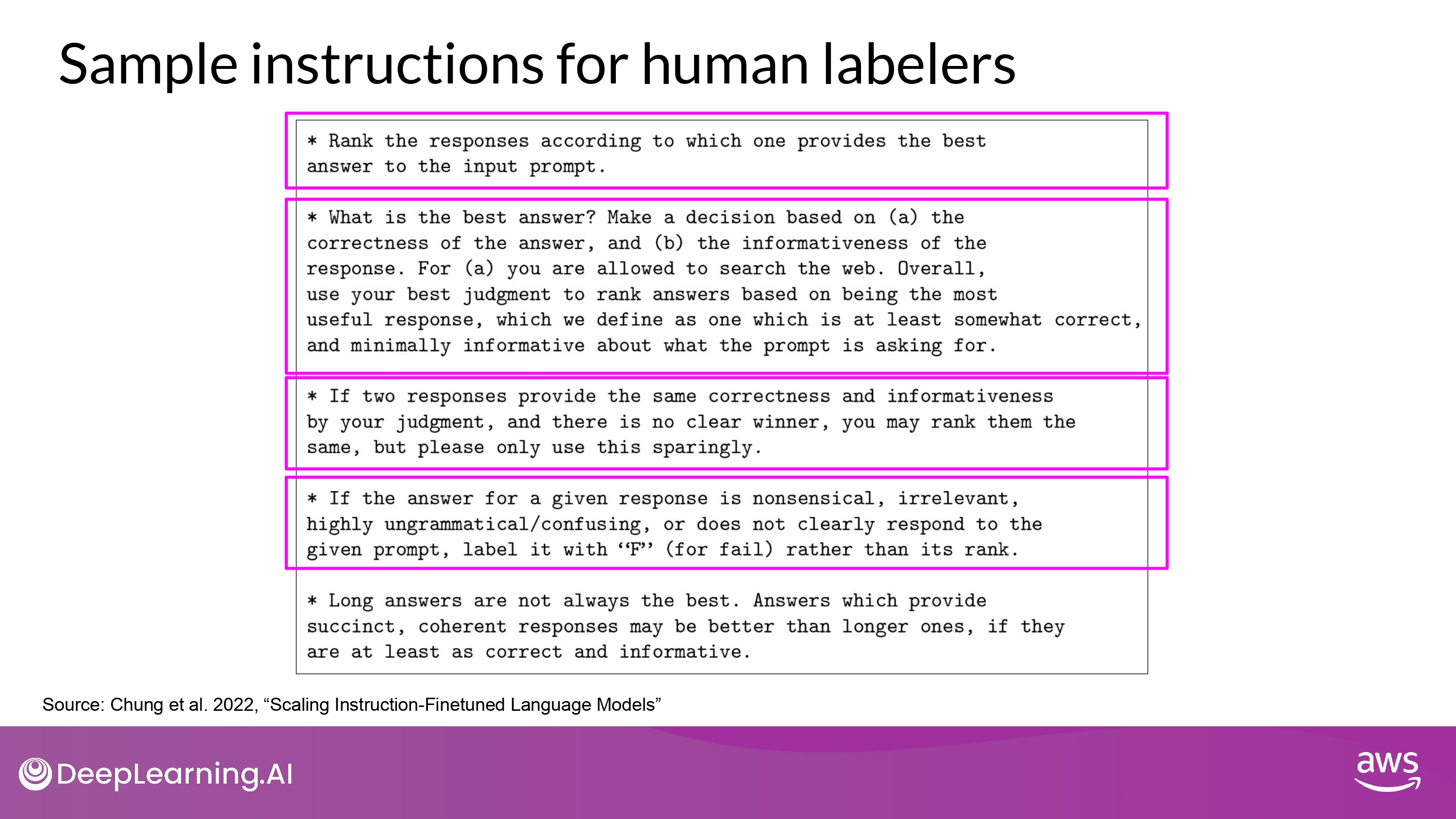
-
Good Sample
-
Overall task
- Detailed instruction
- Clear edge case instruction
- All options to take - poor quality answers can be easily removed
-
4. Prepare labeled data for training

-
How to?
-
Depending on the number N of alternative completions per prompt : N_Combination_2
-
For each pair, assign a reward of 1 for the preferred response and a reward of 0 for the less preferred response
-
Reorder the prompts so that the prefereed option comes first
- The reward model expects the preferred completion, which is referred ts as Y_j first
-
-
Another way
Thumbs-Up, Thumbs-Down Feedbackis often easier to gather than ranking feedback- BUT!
Ranked Feedbackgives you more prom completion data to train your reward model- As you can see, here you get three prompt completion pairs from each human ranking
RLHF : Reward Model
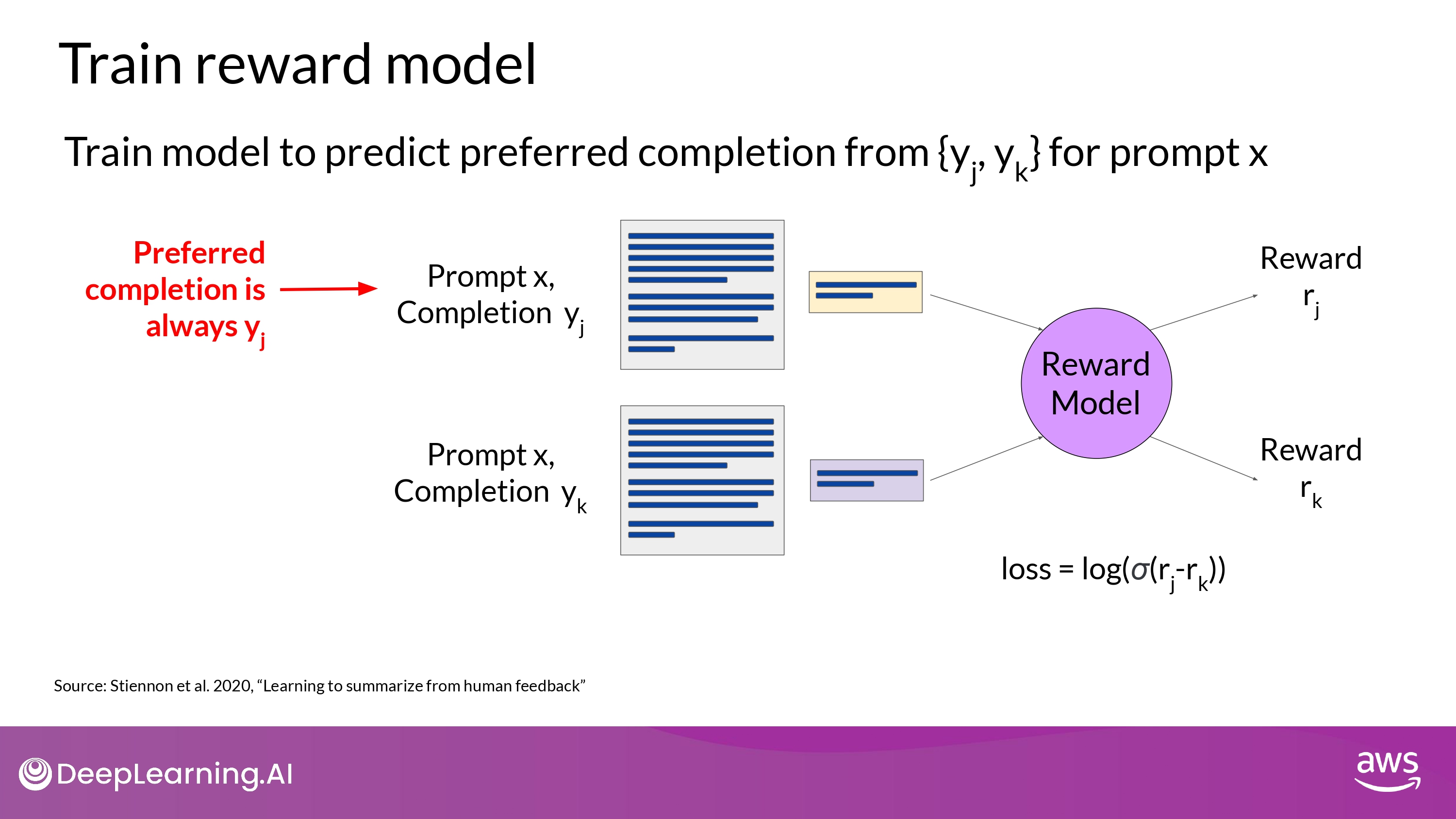
- By the time you’re done training the reward model,
- You won’t need to include any more humans in the loop
- Reward model will take place off the human labeler
- and automatically choose the preferred completion during the RLHF process
- Reward model = LM의 일종
- e.g. BERT (supervised learning으로 학습된 LM)
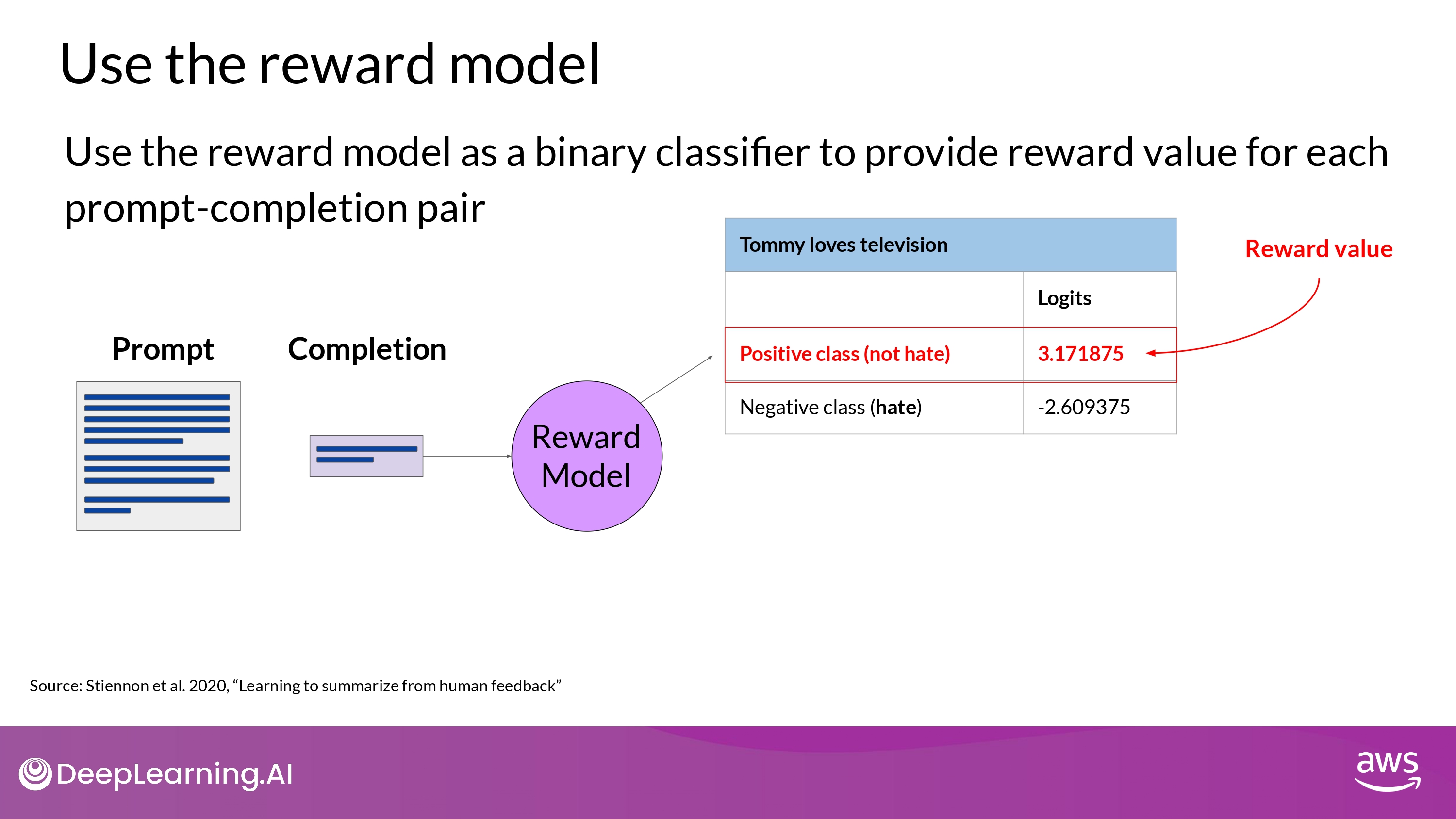
- Trained on human rank prompt-completion pairs
- Use the Reward Model as a `Binary Classifier`
- The largest value of the positive class
- what you use as the reward value in RLHF
- Higher value represents a more aligned response
- Less aligned response receive a lower value
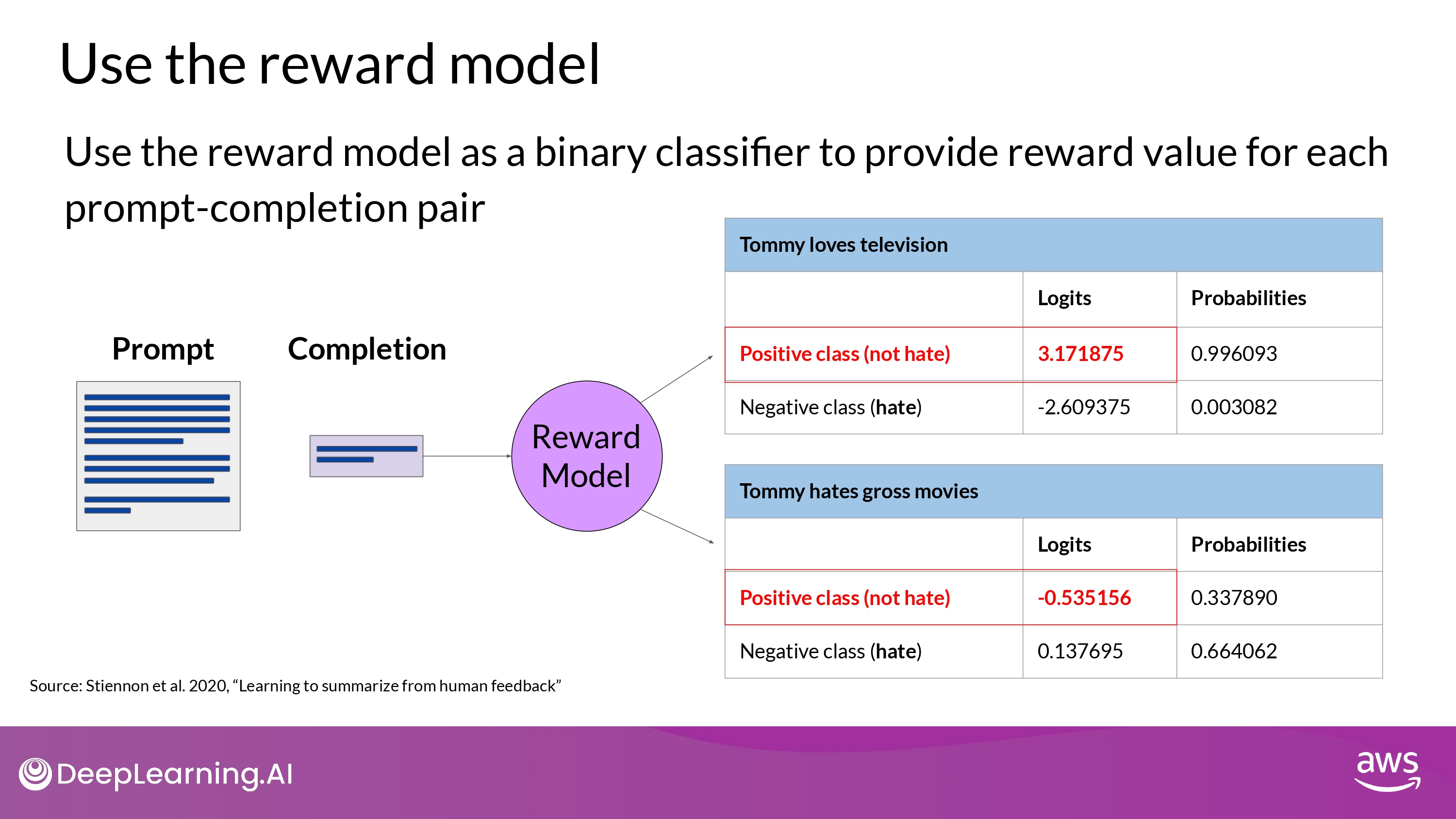
- Logits : unnormalized model outputs before applying any activation function
- Softmax function to the logits ->
Probabilities
- Softmax function to the logits ->
Use the reward model to fine-tune LLM with RL
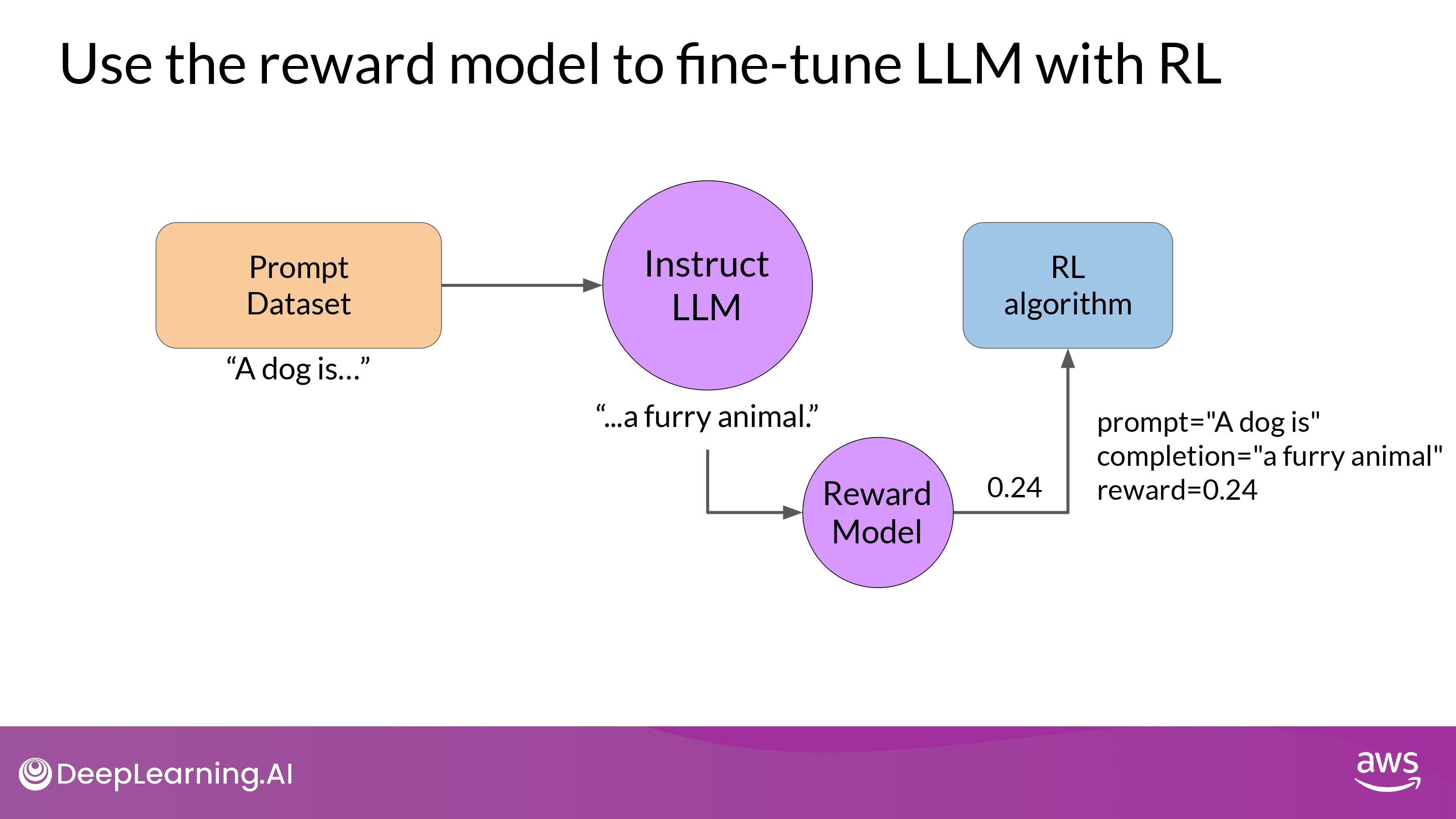
- REMEMBER : Start with a model that already has good performance on your task
- we’ll work to ALIGN an instructions fine-tune on LLM
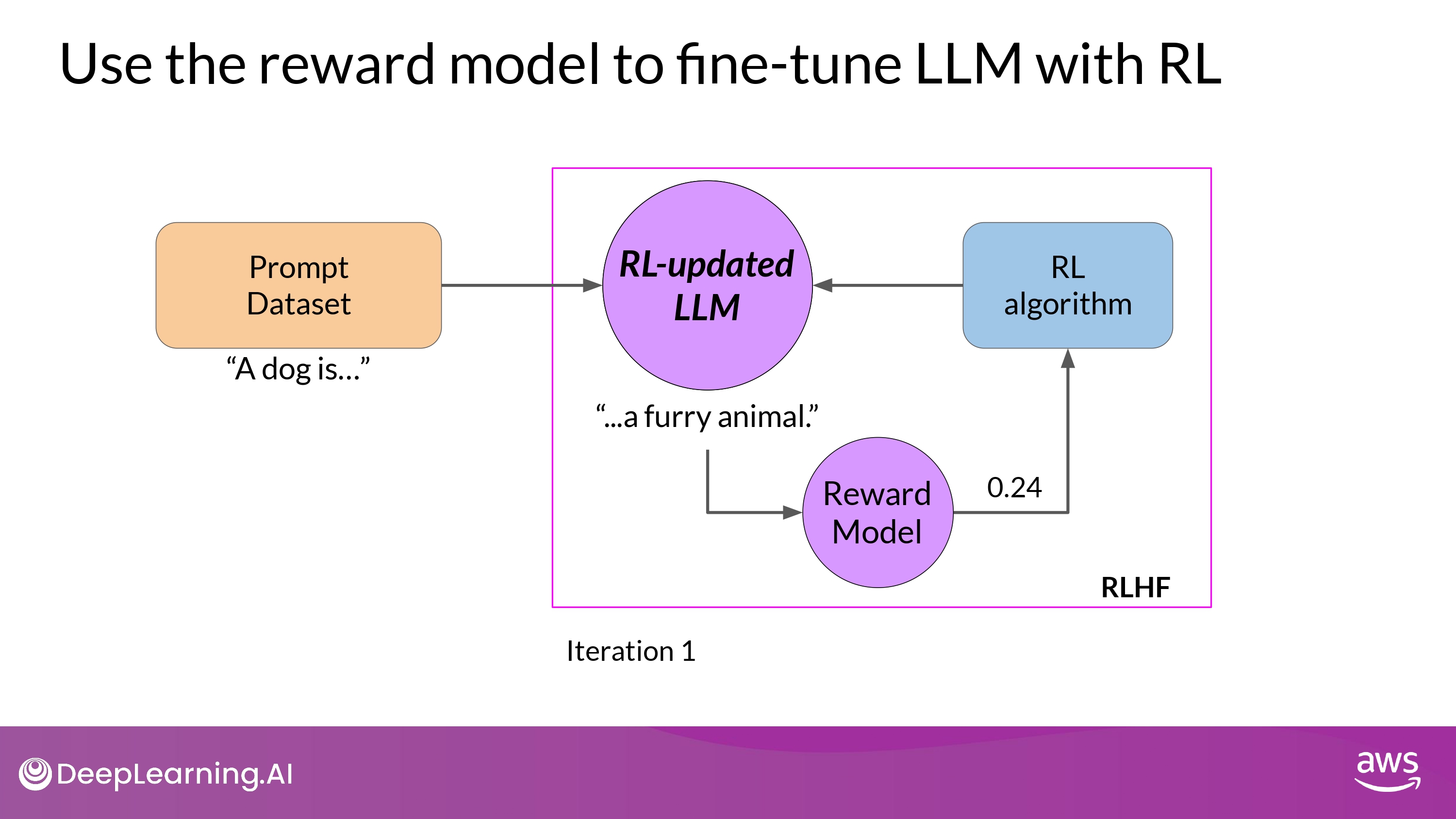
- Pass
reward valuefor theprompt-completion pairtoRL algorithm- to update the weights of the LLM
- move to more aligned, higher reward responses
- to update the weights of the LLM
- RL-updated LLM
- 위 전체 과정이 single iteration of RLHF process를 구성함
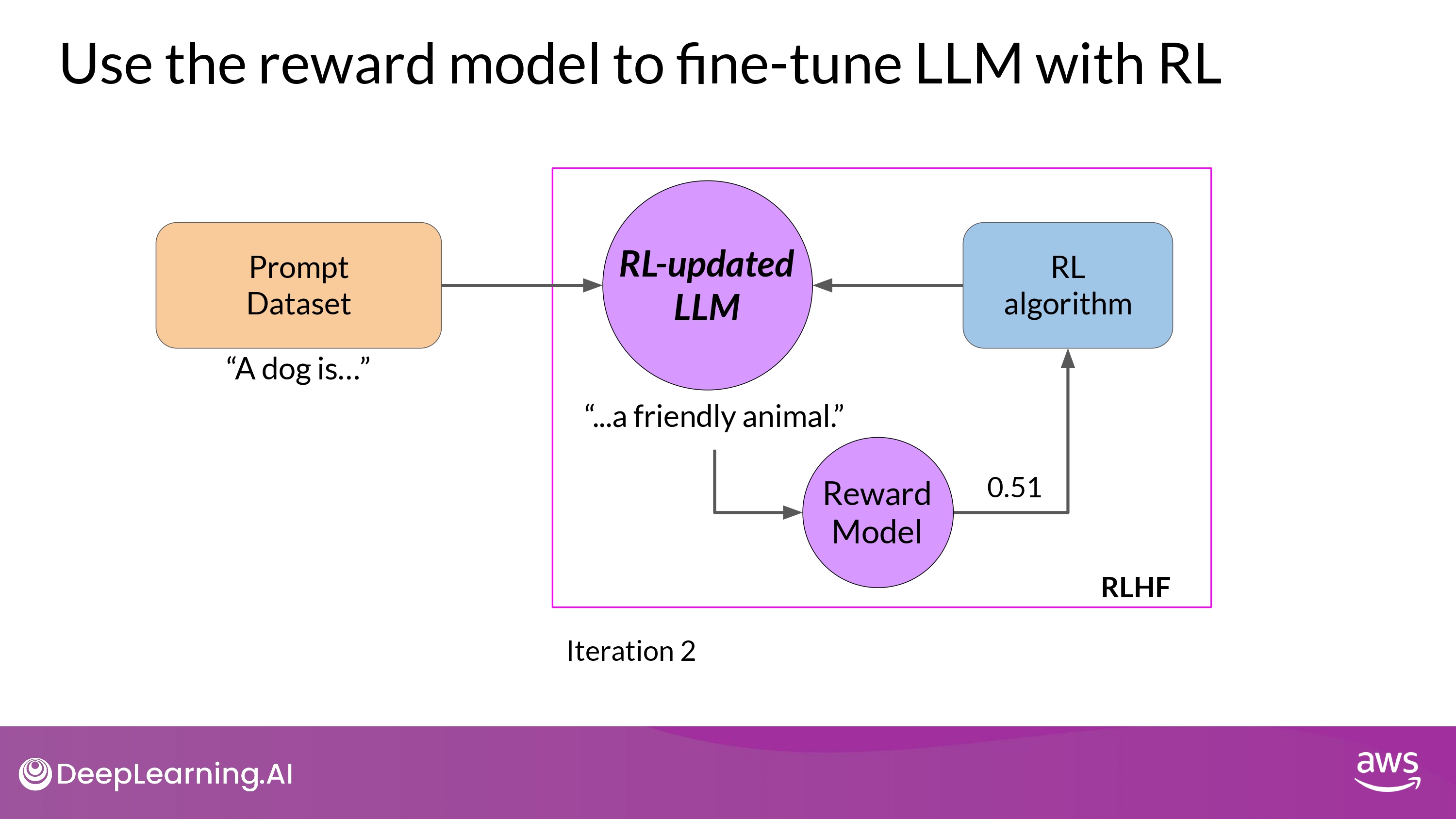
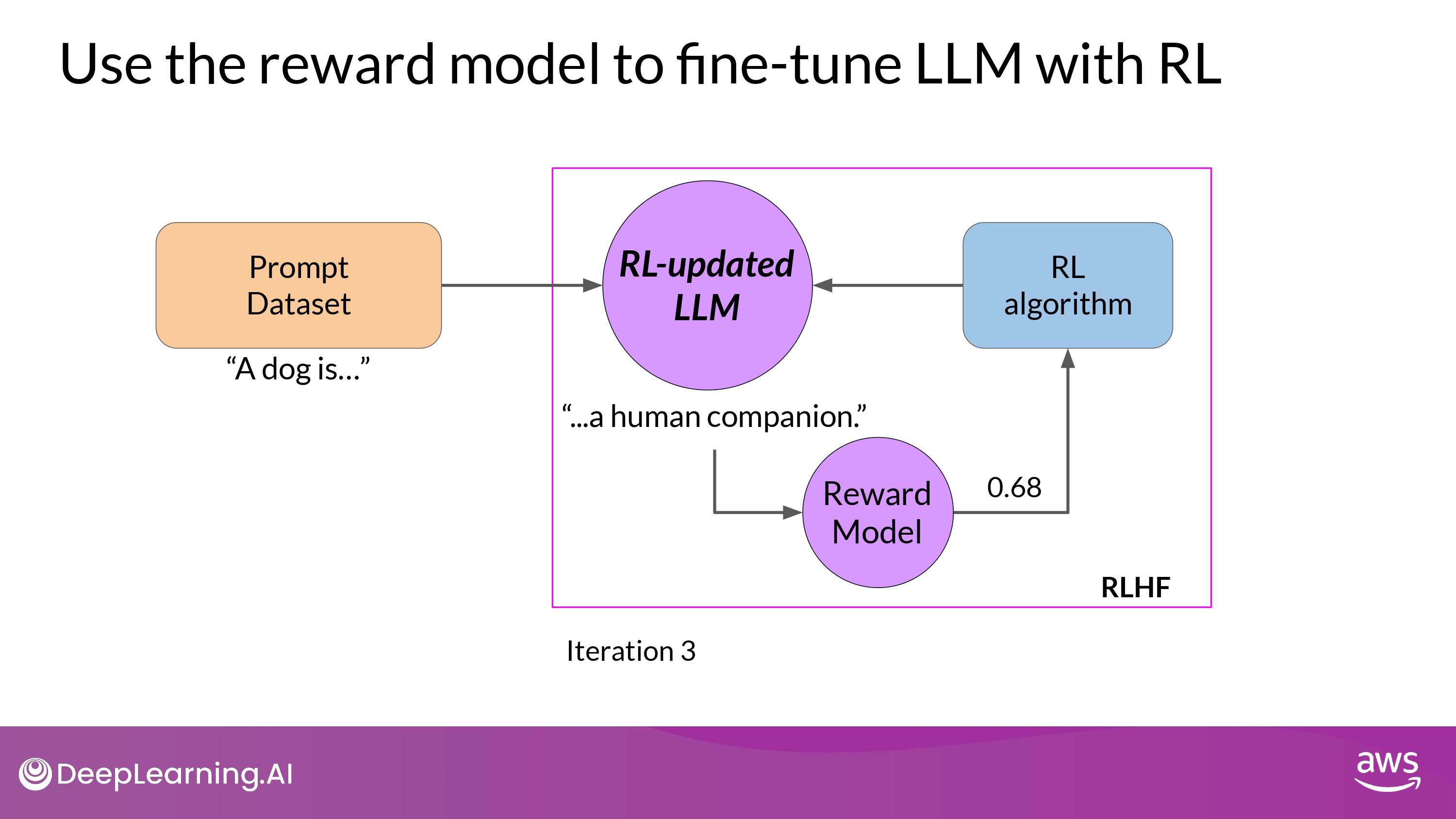
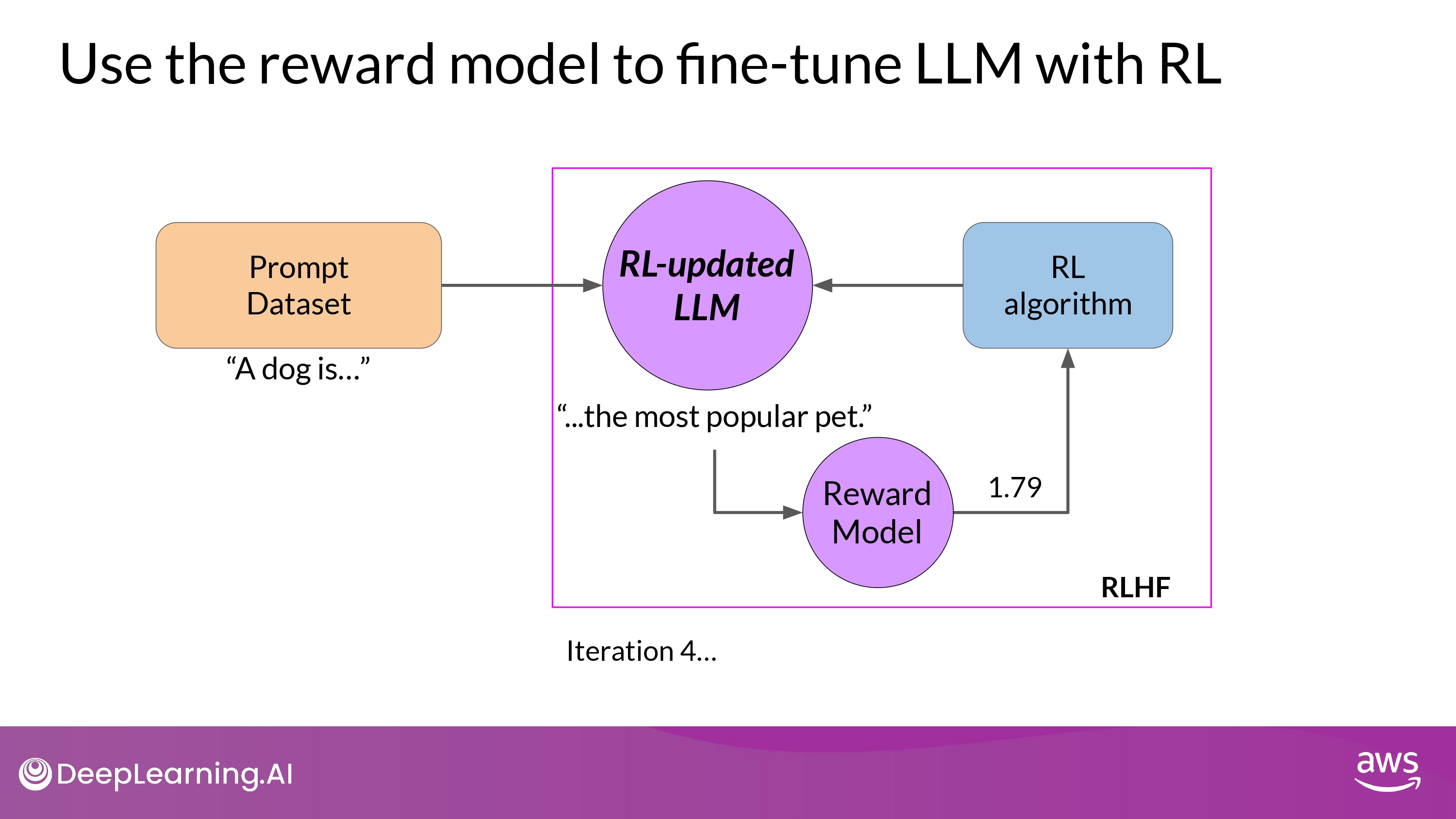
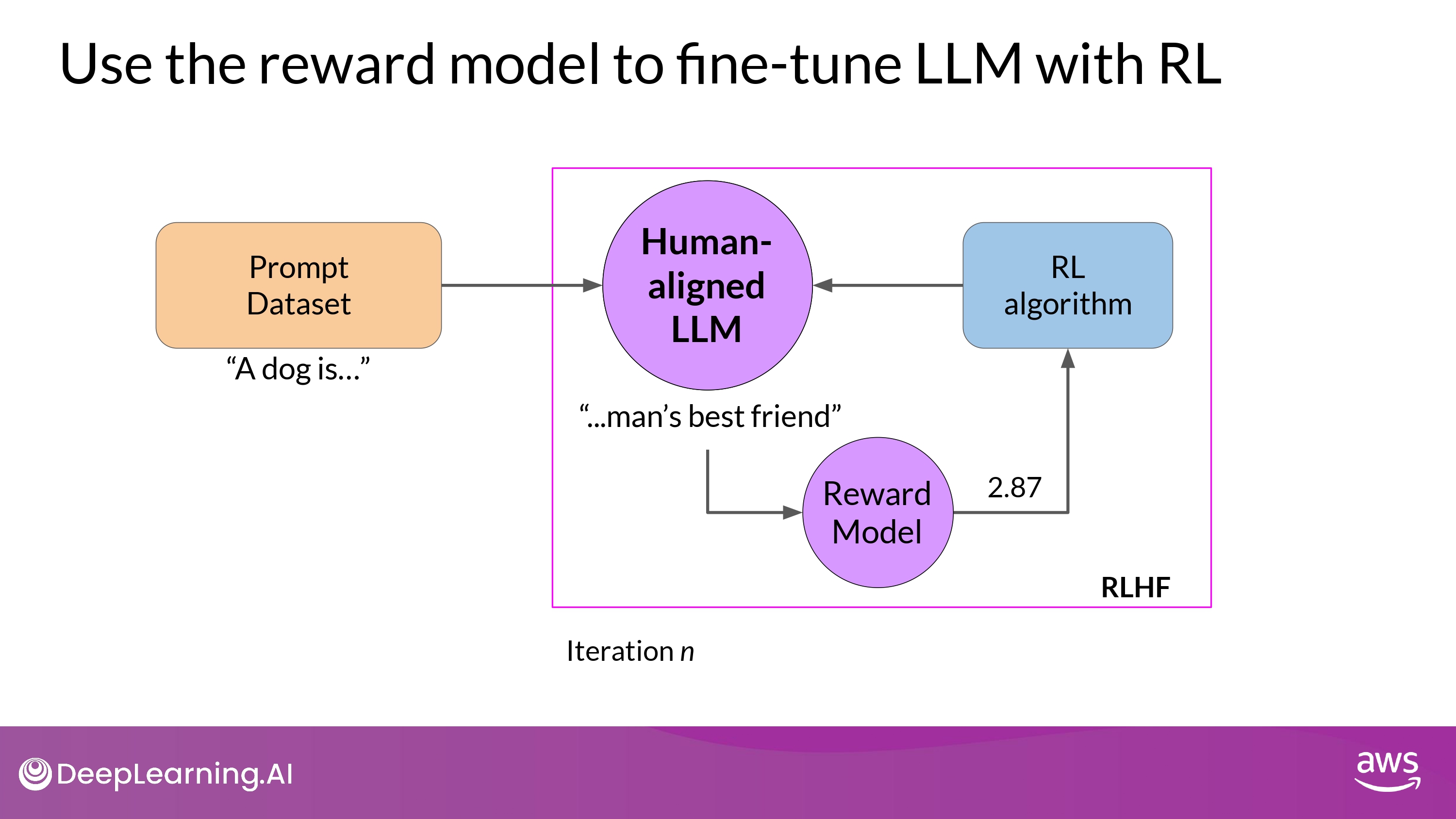
- 학습 과정이 잘 진행될수록, reward가 향상됨
- (예시, 0.24 -> 0.51 -> 0.68 -> …)
- 즉, human preference에 더 부합하는 답변 생성
- 학습 종료 조건
- 특정 metric에 부합할 때까지 학습
- threshold value for the helpfulness you defined
- 특정 iteration step까지
- 20,000번 최대
- 특정 metric에 부합할 때까지 학습
- 그렇게…
Human-aligned LLM을 얻을 수 있다
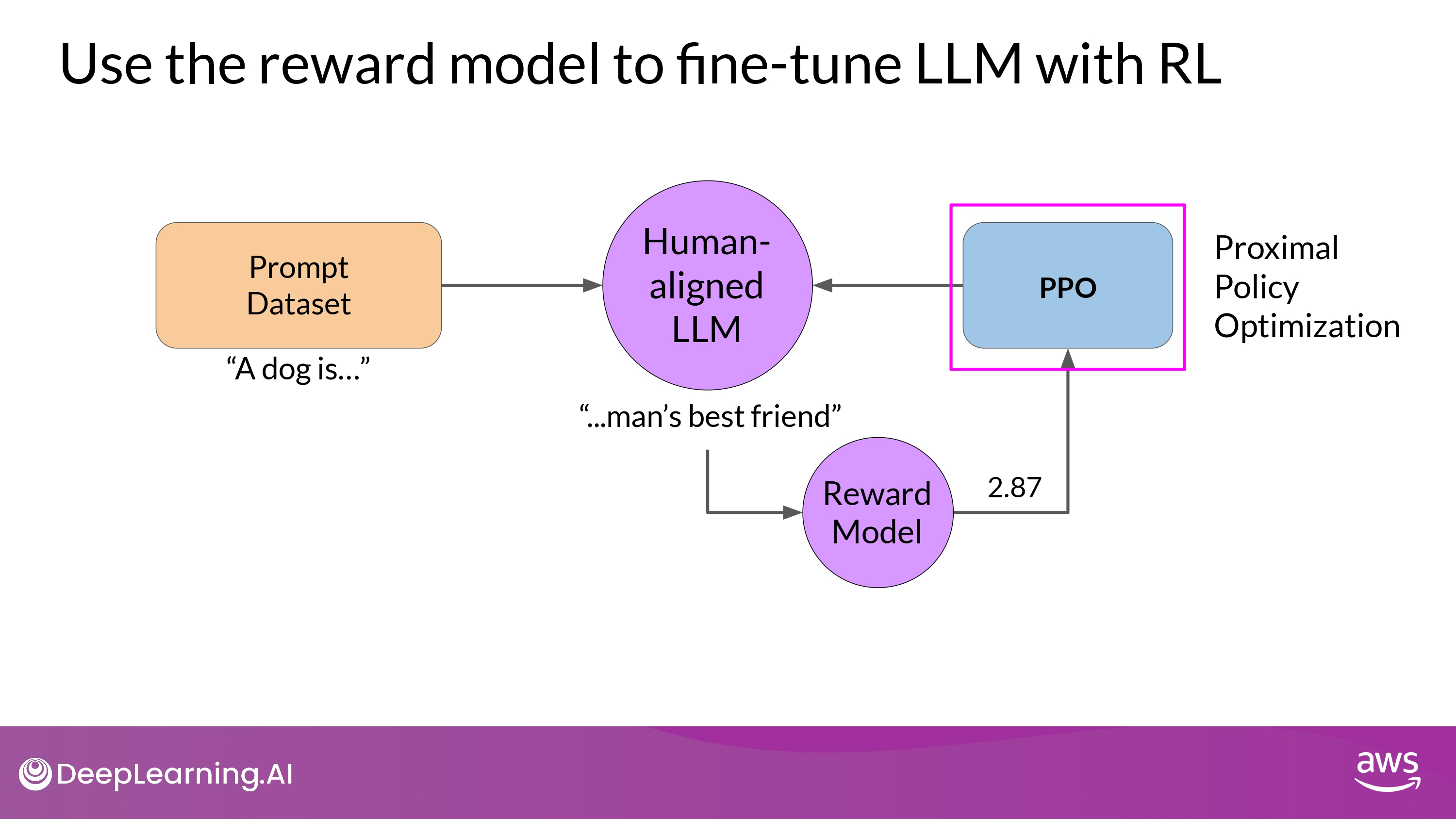
- RL algorithm은 다양함
- 대표적인것, PPO